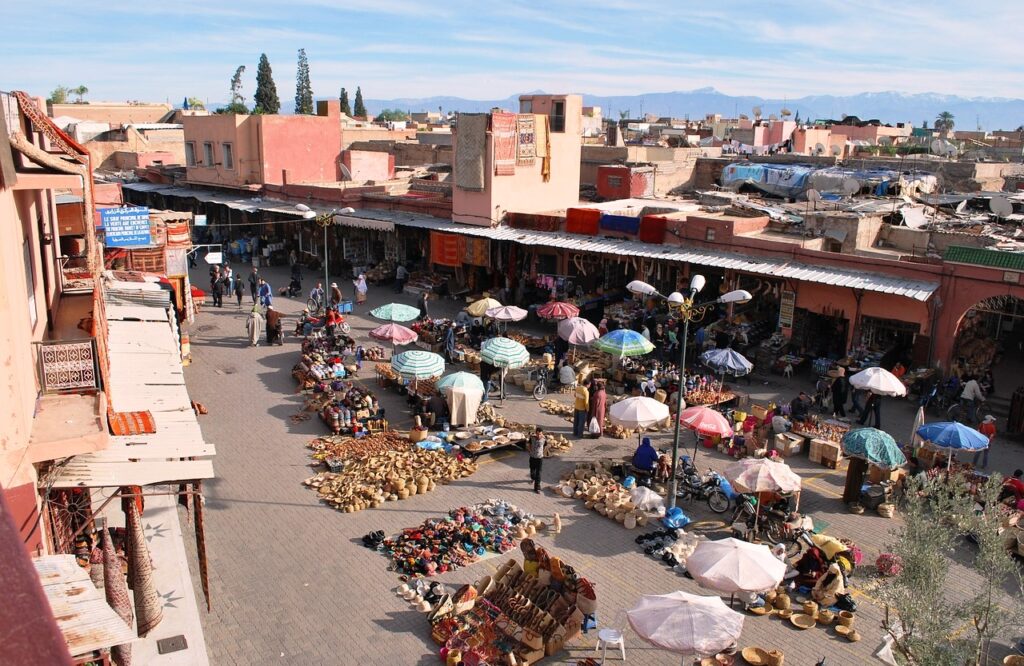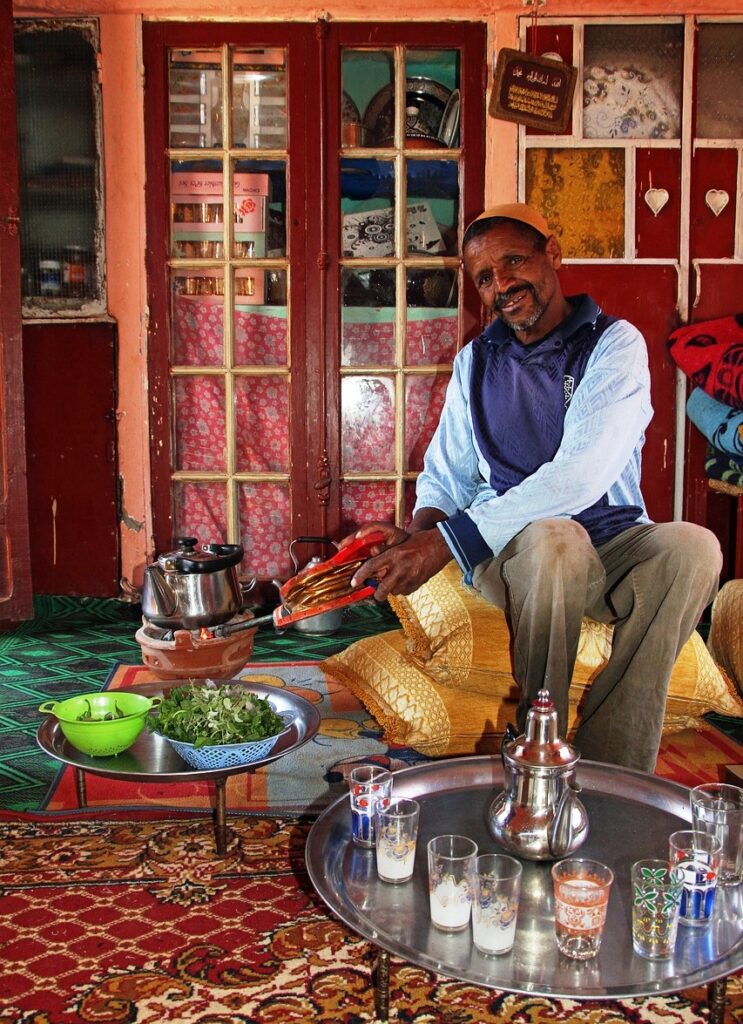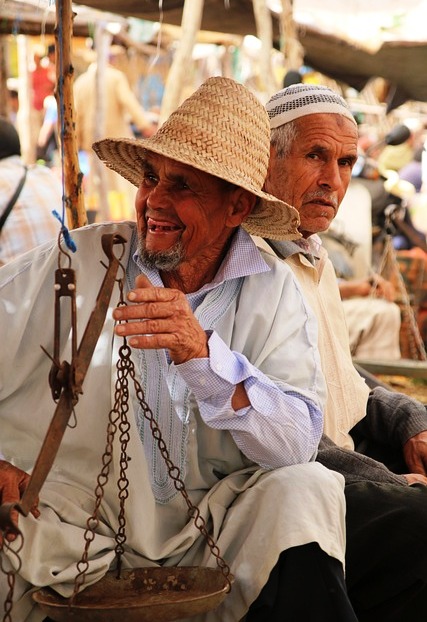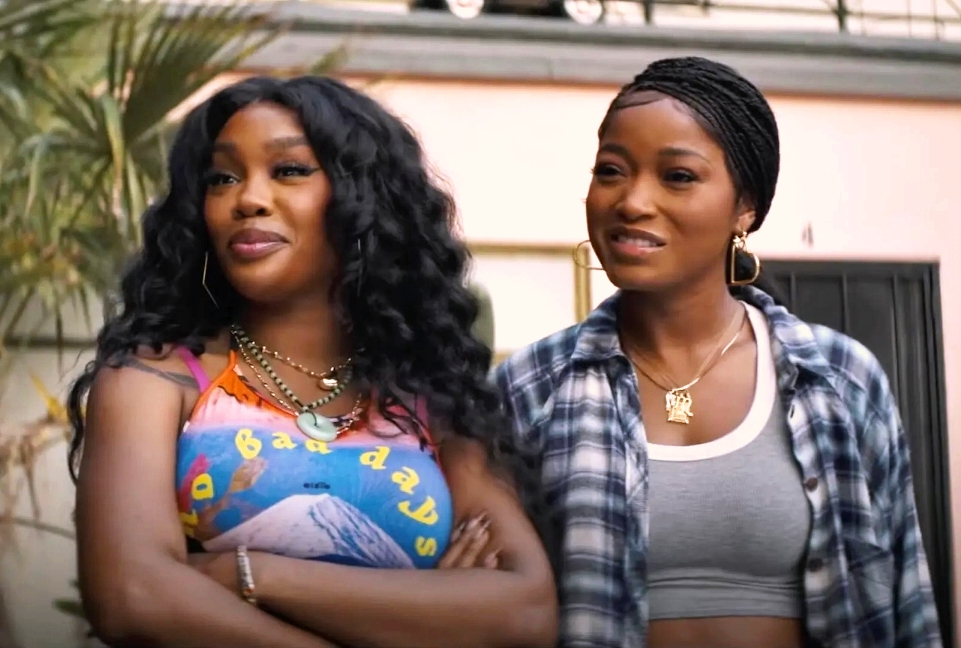
The fondouk, one of the city’s many architectural treasures, is a singular building that captures the rich history and customs of the area.
One of Morocco’s liveliest cities, Marrakech is a mosaic of architecture, culture, and history.
This article offers a thorough grasp of the importance of fondouks in Moroccan culture by exploring their history, architecture, uses, and styles in Marrakech.

?What does “fondouk” mean
The term “fondouk” describes a kind of traditional Moroccan inn or lodging that is frequently utilized by tourists and businesspeople.
These places are convenient for people on the go because they usually offer simple lodging and are situated in busy areas.
Due to their importance in regional trade and travel, fondouks have historical significance.
In Morocco, “fondouk” refers to a traditional inn or hotel that is frequently used by tourists and traders.
These facilities often offer minimal lodgings and are frequently located in busy places, making them ideal for folks on the go.
Fondouks have historical value because they were used for trade and transport in the region.
Fondouk: Historical Background
Fondouk, a sort of traditional inn or caravanserai in Morocco, has a long history that represents the country’s active cultural and economic connections.
The medieval period
These structures were mostly constructed during the medieval period, notably during the 12th century, when Morocco became a vital hub for trade routes connecting Europe, the Middle East, and Sub-Saharan Africa.
The term “fondouk” comes from the Arabic “funduq,” which means a place to stay, and these structures were necessary for hosting travelers, merchants, and their animals.
Fondouks have historically been strategically positioned along key trade routes, particularly in lively cities like as Marrakech, Fez, and Tangiers.
They functioned as safe havens for traders transporting spices, linens, and precious metals.
Fondouk architecture often had vast courtyards, animal stables, and basic guest rooms meant for comfort and security.
The plan frequently featured common spaces where passengers might mingle, tell tales, and do business, promoting a feeling of community among varied groups of people.
Fondouks were important for more than just lodging; they also contributed significantly to Morocco’s economic growth.
These inns helped to boost local economies and urban development by encouraging trade and commerce.
The flood of commodities and people resulted in cultural contacts that improved Moroccan civilization by combining influences from diverse locations and cultivating a distinct Moroccan identity.

Fondouk in the nineteenth century
Fondouks’ function evolved over the nineteenth century, when European colonial powers increased their influence in North Africa.
The emergence of modern transportation technologies, such as trains and automobiles, reduced the need for traditional caravan routes.
However, fondouks have adapted to changing circumstances by catering to a new generation of visitors and travelers seeking authentic experiences.
Many fondouks have been rebuilt and converted into guesthouses, giving tourists a glimpse into Morocco’s rich heritage and friendliness.
Today, fondouks are not just historical landmarks, but also important components of Morocco’s tourist sector.
They attract tourists who are interested in learning about the country’s history, architecture, and culture. Many fondouks have been kept or renovated, demonstrating traditional Moroccan workmanship and design.
These institutions’ elaborate tile work, wooden carvings, and beautiful plasterwork all represent the region’s creative past.
Fondouks remain a hallmark of Morocco’s continuing hospitable attitude in modern times. They serve as a reminder of how commerce and cultural interaction have shaped Moroccan civilization throughout history.
Fondouks provide a unique opportunity to reconnect with the past while experiencing the kindness and generosity of Moroccan culture.
Fondouk: the essence of Morocco’s dynamic past
The history of fondouk in Morocco reflects the country’s rich fabric of trade, culture, and hospitality.
Fondouks exemplify the essence of Morocco’s dynamic past, from its origins as crucial stopover on old trade routes to their current significance in tourism.
They serve as permanent representations of the links made through commerce and the friendly attitude of Moroccan society, encouraging visitors to experience the warmth and richness of its legacy.
The fondouk originated during the medieval period, when trade networks crisscrossed Northern Africa.
These constructions were crucial for merchants and travelers since they provided a place to relax, store goods, and conduct business.
Fondouks arose as important commerce hubs in Marrakech, notably during the 16th century, when the city was at its peak of success.
Marrakech’s strategic location made it an important stop on caravan routes between Sub-Saharan Africa and Europe.
The city became a melting pot of cultures, ideas, and products, with the fondouk playing a critical role in enabling the trade.
As commerce expanded, so did the fondouks, which evolved into multipurpose facilities that met the requirements of merchants, artisans, and tourists alike.
Fondouk: Architectural Features
Marrakech’s fondouk architecture is a remarkable combination of usefulness and aesthetic appeal.
These structures are often built around a central courtyard and are intended to house both humans and animals.
The plan sometimes includes stables for horses and camels, storage rooms for commodities, and lodging for tourists.
Central Courtyard
The middle courtyard serves as the fondouk’s community place for relaxation and social engagement.
This open-air space is frequently ornamented with elaborate tile work, fountains, and lush foliage, providing a tranquil ambiance despite the hectic action of trade.
The courtyard is a gathering spot for merchants to talk business, exchange tales, and form connections.
Stable and Storage
One of the fondouk’s principal tasks is to house animals. Stables are often positioned on the ground floor, providing convenient access to the courtyard.
These areas are intended to accommodate a wide range of animals, including horses, donkeys, and camels, which were necessary for transportation and commerce.
In addition to stables, fondouks provide storage facilities for products. These areas are frequently outfitted with high ceilings and huge doors to aid in the transit of heavy things.
The design of these storage facilities respects merchants’ practical demands, ensuring that their products are secure and conveniently accessible.
Living Quarters
The top floors of fondouks are generally used as residential rooms for tourists.
These rooms are often plain yet practical, with basic facilities for tired visitors.
The architecture of these places is classic Moroccan, with ornamental elements like carved wooden doors, bright tiles, and elaborate plasterwork.

Fondouk :Architectural Styles
Fondouks in Marrakech showcase a wide range of architectural styles, influenced by the city’s unique cultural past.
Local materials, like as adobe and stone, are commonly used, and many fondouks include elaborate embellishments that highlight Moroccan artists’ expertise.
Moorish Influence
Many fondouks include Moorish architecture, which includes horseshoe arches, delicate tile work, and rich stucco ornamentation.
This style shows Islamic influence on Moroccan architecture and is commonly found in fondouk ornamental features.
Berber Elements
Fondouks feature both Moorish and Berber architectural aspects. This is obvious in the use of natural materials and the emphasis on utility. Berber design frequently focuses functionality, resulting in structures that are well-suited to the region’s severe environment.
Andalusian Touches
Some fondouks have Andalusian architectural influences, notably the use of brilliant colors and elaborate geometric designs. This style emphasizes Morocco’s historical relations with Spain, notably during the Reconquista.
Functions of the Fondouk
The fondouk serves several purposes, making it an essential component of Marrakech’s social and economic fabric.
Its core use as a rest stop for travelers and merchants is supplemented by a number of other vital roles.
Trade & Commerc
The fondouk is fundamentally a trading and commercial hub. Merchants utilize these areas to conduct business, negotiate contracts, and display their products.
The fondouk’s closeness to Marrakech’s busy souks strengthens its position as a commercial hub, attracting both local and foreign businesses.
Social Interaction
Fondouks are more than simply places to relax; they are also communal areas where individuals from all backgrounds may gather.
Travelers share tales, ideas, and connections, creating a feeling of community.
This social component is especially significant in a place like Marrakech, where cultural interchange is part of everyday life.
Cultural Exchange
Marrakech, being a cultural melting pot, has historically served as a hub for cultural interaction.
Fondouks enable this interaction by bringing together individuals from various locations and backgrounds.
The exchanges that take place within these walls add to the rich fabric of Moroccan culture by mingling traditions, languages, and customs.
Hospitality
The fondouk epitomizes Moroccan hospitality. Travelers are greeted with open arms, and the fondouk provides a safe refuge for people on their way.
This sense of welcome is strongly rooted in Moroccan culture, and the fondouk’s friendly environment reflects this.
The Decline and Revival of Fondouks
As contemporary transportation means and commercial routes arose, the traditional fondouk began to fade.
The growth of hotels and other types of lodging provided tourists with more pleasant choices, resulting in a fall in the usage of fondouk.
However, in recent years, there has been a growing interest in these old buildings.
Preservation Efforts
Recognizing the cultural and historical value of fondouks, some groups and municipal governments have launched preservation campaigns.
These efforts seek to preserve and protect fondouks, ensuring that they are part of Marrakech’s architectural history.
Restoration initiatives frequently aim on retaining the fondouk’s original characteristics while adapting them to current usage.
Adaptive reuse
In addition to preservation, several fondouks have been adapted for modern usage.
Some have been converted into boutique hotels, art galleries, or cultural centers, allowing guests to appreciate the elegance of these ancient buildings while still enjoying modern comforts.
This adaptive reuse not only revitalizes fondouks, but also benefits the local economy.
Cultural Significance
Fondouks are being revived not just to preserve structures, but also to celebrate their cultural value.
Fondouks are a symbol of Marrakech’s rich history and the importance of trade and hospitality in Moroccan culture. By renovating old monuments, the city celebrates its history while looking ahead to the future.
The fondouk is more than simply an architectural landmark in Marrakech; it represents the city’s history, culture, and attitude of welcome.
For millennia, these distinctive buildings have played an important role in enabling trade, creating social relations, and promoting cultural exchange.
As Marrakech evolves, the fondouk remains a symbol of the city’s rich legacy and a reminder of the value of community and connection.


